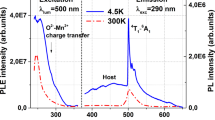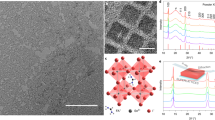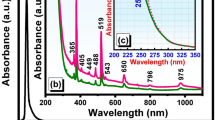Abstract
A LARGE part of the studies on the afterglow or phosphorescence of solids has been made on zinc sulphide activated by copper (ZnS–Cu). Most of the theories of phosphorescence of ZnS–Cu have been based on the assumption that, when light is absorbed by the phosphor, electrons are freed from the luminescence centres and wander about the crystal. These free electrons may then be captured by traps, where they may spend appreciable time before they are freed by thermal energy, and may, then, either be retrapped, or are recaptured directly by empty luminescence centres, thus producing luminescence. The time the electron spends in the trap corresponds to the time delay of emission in phosphorescence.
This is a preview of subscription content, access via your institution
Access options
Subscribe to this journal
Receive 51 print issues and online access
$199.00 per year
only $3.90 per issue
Buy this article
- Purchase on Springer Link
- Instant access to full article PDF
Prices may be subject to local taxes which are calculated during checkout
Similar content being viewed by others
References
Randall, J. T., and Wilkins, M. H. F., Proc. Roy. Soc., A, 184, 366 (1945).
Author information
Authors and Affiliations
Rights and permissions
About this article
Cite this article
WILKINS, M., GARLICK, G. Relation Between Photoconduction and Luminescence in Zinc Sulphide. Nature 161, 565–566 (1948). https://doi.org/10.1038/161565a0
Issue Date:
DOI: https://doi.org/10.1038/161565a0
Comments
By submitting a comment you agree to abide by our Terms and Community Guidelines. If you find something abusive or that does not comply with our terms or guidelines please flag it as inappropriate.



